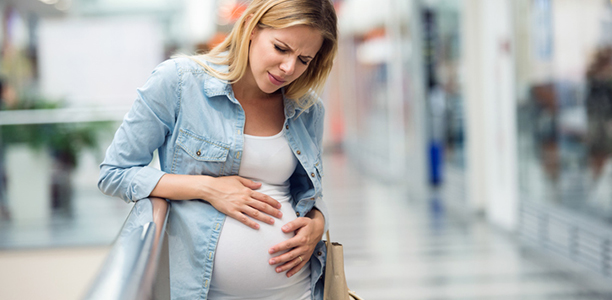Four in 1000 births in Australia are unplanned out-of-hospital deliveries – or Born Before Arrival (BBA) births.
They occur when mothers intend to give birth at hospital, but don’t make it in time – and obstetrics and gynaecology researchers at Flinders University and Western Sydney University have found BBA births occur most commonly among Australian women of lower socioeconomic status.
The study, ‘Born Before Arrival in NSW, Australia (2000–2011): a linked population data study of incidence, location, associated factors and maternal and neonatal outcome – assessed information about more than 1 million births’, has been published in BMJ Open.
Study lead author Associate Professor in Midwifery Charlene Thornton of Flinders University – who wrote the paper with Professor Hannah Dahlen of Western Sydney University – found that babies who don’t make it to the delivery room are more likely to be premature, have a smaller birth weight, and be female. This reflects the fact that female babies tend to get themselves into better positions, are less likely to need intervention, and are a bit smaller.
The researchers also found that Australian-born women expecting their second child are most likely to get caught off guard. Some assume that because their first labour took a long time, it would take just as long the second time, though the opposite is most often true.
A correlation exists between areas with high rates of homebirth and areas where BBA occurs more commonly. A proportion of these BBA births may be freebirths (an intentional homebirth without a health professional in attendance), with a transfer of the baby to hospital following the birth due to maternal or neonatal complications.
The research shows that babies born before arrival experience a higher proportion of adverse outcomes than babies born in a hospital or at home during a planned homebirth with an attending midwife.
The perinatal mortality rate is significantly higher among BBA births than non-BBA births, and babies born before arrival are more likely to be admitted to a special care nursery or neonatal intensive care unit.
However, while many women express fear about giving birth enroute to a hospital, pregnant women who are educated in birthing risk factors should not be alarmed.
Most of the births turn out well, says Associate Professor Thornton from the College of Nursing and Health Sciences at Flinders University.
Associate Professor Thornton says women should be educated on the risk factors which may mean they should make haste when heading to hospital.
“It is really important that women don’t worry too much about this happening – as the chances are small and most of the time it all turns out well,” she says.
“However, if you expect that you might have difficulty getting to hospital; you are having your second baby and the first birth was reasonably quick – it might be worth having a bag packed early.”
Associate Professor Thornton says the best course of action for a birthing that does occur quickly is for the mother to get down low, put something soft beneath them, and call for an ambulance.
“Have some warm towels at hand, and immediately place the naked baby against the mother’s chest, then place a warm blanket or towel over them,” she says.
“Don’t worry about cutting the umbilical cord; it’s more important to stay calm. And remember that the most critical problem is that BBA babies arrive at the hospital cold, so keeping them warm is critical.”
Born Before Arrival is recorded for the birth of any infant of more than 20 weeks’ gestation and over 400 gram birth weight which occurs outside of the hospital, birth centre setting or planned midwife attended homebirth.
Study co-author Professor Hannah Dahlen, from Western Sydney University’s School of Nursing and Midwifery, says women often express a fear of giving birth on route to the hospital, and – while it is rare – these fears do have some basis.
“In Australia, around 4 in 1000 births occur before the mother has arrived at hospital,” Professor Dahlen says.
“These stats do not include planned home births which are attended by midwives. Most often, BBA is recorded when mothers intend to give birth at hospital, but the mother has not been able to make it in time.
“Usually, the baby has been born in the home, on the way to hospital or in an ambulance – without a midwife or doctor in attendance.”
From 2000-2011, 1,097,762 births were recorded in NSW. Of these births, 4,945 were recorded as BBA – equating to a rate of 4.6 per 1000 births.
From this dataset, researchers developed a demographic profile of the mothers most likely to give birth before arriving at hospital:
- 2 per cent were Australian born.
- 7 per cent had at least one previous birth (41.8 per cent were having their second baby).
- 4 per cent gave birth to female babies.
- 9 per cent were private hospital patients.
(Source: Flinders University, BMJ Open)










